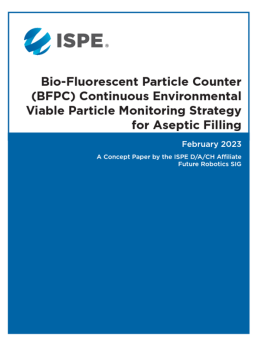Bio-Fluorescent Particle Counter (BFPC) Continuous Environmental Viable Particle Monitoring Strategy for Aseptic Filling
1 Introduction
Aseptic filling has undergone tremendous development in the past decades, from manned cleanrooms to modern isolator systems, which provide a significant improvement in containment and minimizing contamination risks. Isolator systems allow for a validated aseptic environment where operators are completely separated via gloves, and material transfers in and out are performed through validated technologies. As recommended in the EU GMP Annex 1 [1], isolators provide a safe environment against potential sources of endotoxin/pyrogen, particulate, and microbial contamination for aseptic filling. This is also reflected in the current trend of the pharmaceutical industries toward gloveless and robotic isolator technology.
Nevertheless, traditional monitoring approaches, originally developed for manned clean rooms, are still applied. Monitoring with traditional methods have limitations regarding the sensitivity of the methods and pose a risk to the drug product by interventions and handling steps connected to sampling, sample transport to the laboratory, and evaluation. Modern technologies, for example robotic isolators, and the advancement of pharmaceutical products, such as personalized medicines in cell and gene therapies, drive the need for fast and reliable viable particle monitoring.
Reduction of conventional monitoring can be achieved by the implementation of new methods, such as using Bio-Fluorescent Particle Counters (BFPCs), which provide many advantages in the pharmaceutical industry. BFPCs detect and count the total biological particles in real time, significantly reducing contamination risks by eliminating the human interventions required for the manual sampling steps connected with traditional methods. Furthermore, BFPCs can detect adverse trends as they occur, with the possibility to react immediately.
The adoption of Environmental Monitoring (EM) through modern technologies, such as BFPCs, has proven to be a long process and requires a solid data set and validation strategy to be accepted by the authorities. This paper provides key points to consider during the implementation of BFPCs as a routine EM tool in modern isolators.
